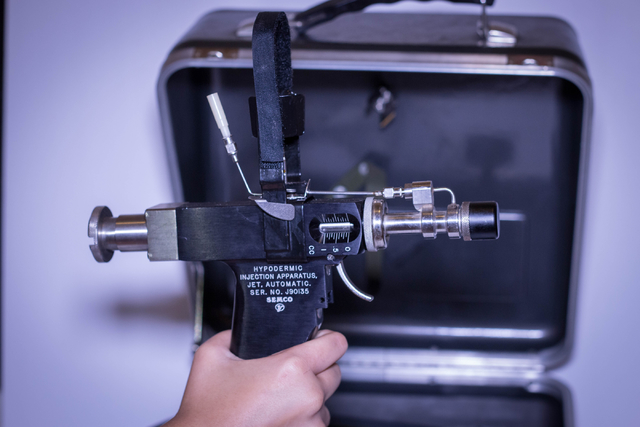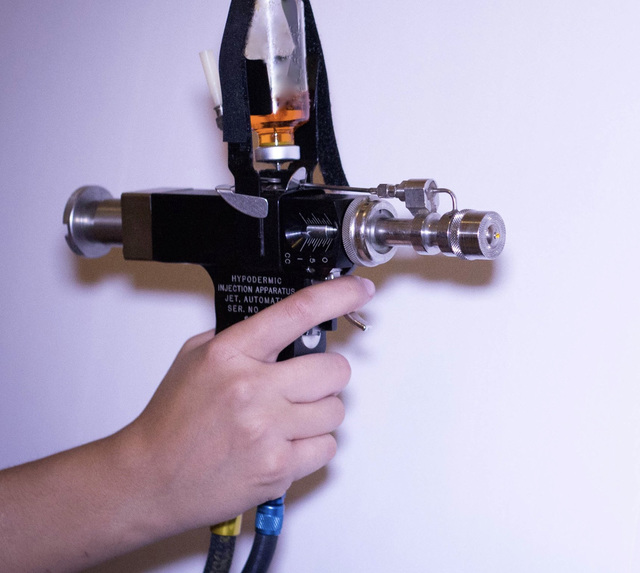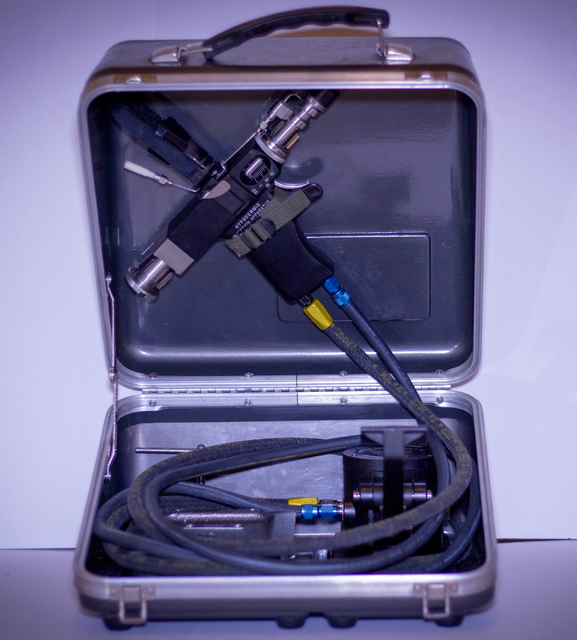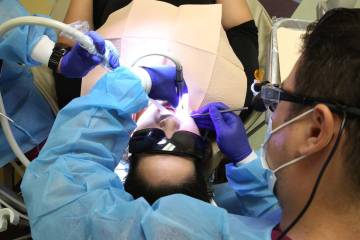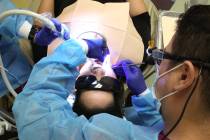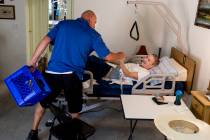Jet guns should be a recognized risk factor for hepatitis C
When I watch the federal government’s current public service messages on TV urging baby boomers to get tested for hepatitis C, I can’t stop thinking about how my arm, and those of many men next to me, bled as we received jet gun vaccinations during our earliest days in the military.
Powerful air pressure from the jet gun forced a tiny stream of medication through our skin without a needle. Because the shot hurt, many of us flinched. Our skin broke, and as we started bleeding, the blood blew back on the jet gun.
The medic injected the next man without cleaning the gun. So it went when I was at Fort Leonard Wood, Missouri.
The year was 1968, the height of the Vietnam War, and recruits arriving at basic training centers around the United States knew they stood a good chance of ending up in harm’s way.
What we baby boomers didn’t know then was that the kind of jet guns touted by the military as devices to help keep us healthy might make us sick.
Today, the inoculators used on huge groups of soldiers are seen by many veterans and some doctors, including Veterans Affairs physicians, as a likely vehicle for transmission of the hepatitis C virus.
Dr. Thomas J. Berger, of the Maryland-based nonprofit group Vietnam Veterans of America, said that given the unsterilized way the vaccinations were done, there is no doubt the VA should label jet gun vaccinations as a risk factor for the disease.
“It’s about money, just like it was for years with Agent Orange,” said Berger, who said the official estimate of 1 in 10 Vietnam veterans having hepatitis C might be low. “There’d be more claims filed for disability with jet guns as a risk factor.”
Though the Defense Department reported no evidence of cross-contamination, the department in 1997 stopped using the type of jet guns first used in the ’60s due to concerns about infection.
At a 2005 FDA hearing, it was estimated the Defense Department vaccinated more than 20 million military personnel with jet guns.
The official position of the VA today is that transmission by jet gun is “biologically plausible.”
In 1997, the World Health Organization banned using jet guns in its global vaccine program.’
Ndidi Mojay, a VA spokeswoman, says the agency does not list jet guns as a risk factor because there is no documented case of such transmission. Still, I’ve examined records of veterans being given disability after VA physicians could find no other reason for a vet’s hepatitis. That happened in a case appealed from the Reno VA regional office in 2005.
Researchers for HCVets.com, an online support group for vets with hepatitis C, found more than 100 successful appeals of regional decisions between 1992 and 2014 that didn’t entertain jet guns as a causative factor for a vet’s hepatitis.
“Many vets haven’t had the energy or money to appeal,” said Tricia Lupole, who heads HCVets.com.
Today, using a needle to inject drugs is listed as the top risk factor by both the VA and Centers for Disease Control. Transfusions before blood was screened in 1992 are listed second.
Lupole says the stigma associated with hepatitis C — some see the disease as a payback for intravenous drug use by junkies — has kept many vets from even being tested for a disease that can lay dormant for decades before viciously attacking the liver.
Deaths associated with hepatitis C reached an all-time high of 19,659 in 2014.
My test showed I didn’t have it.
“Even if jet guns aren’t listed as a risk factor, veterans have to get tested,” said Lupole, whose Marine Corps husband died in 2012 of a heart attack while fighting the disease.
“There are cures today for hepatitis C. We need to save lives.”
Amen.
Paul Harasim’s column runs Sunday and Tuesday in the Nevada section and Monday in the Health section. Contact him at pharasim@reviewjournal.com or 702-387-5273. Follow @paulharasim on Twitter



